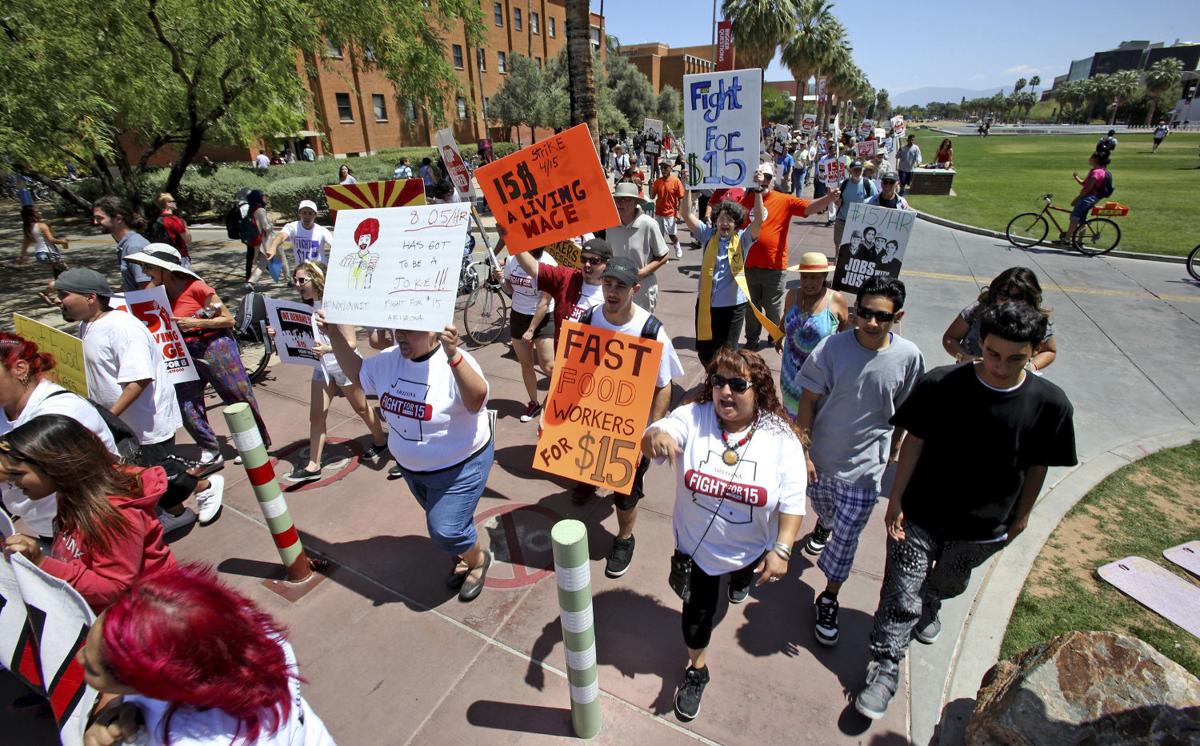The gap between the hourly earnings of Tucson workers and the national average continues to grow, numbers from the Bureau of Labor Statistics show.
As of May 2014, employees in the Tucson Metropolitan Statistical Area, which includes all of Pima County, earned $20.45 per hour, roughly 10 percent less than the national average hourly wage of $22.71.
That gap has been steadily widening, from 5 percent in 2011 to 9 percent in 2013.
Of the 22 major occupational groups the bureau takes into account, Tucson workers earn less in all of them. Even what appear to be small bright spots — health care support and protective services — are discounted by federal officials as not statistically significant.
Education — or lack thereof — is one of the reasons area wages are below the national average, said George Hammond, director of the Economic and Business Research Center at the University of Arizona’s Eller College of Management.
In 2013, the college attainment rate of the working-age population in Tucson was 28.9 percent, compared to 30.7 percent for the United States.
Other factors involve the region’s geographic location, which not only means ready access to immigrant workers — who generally work for lower wages in low-skilled jobs — but also people looking for a better place to live.
“In a lot of cases people are willing to accept lower wages to be able to live in a place with a nice climate, sunny weather. I think that also puts some downward pressure on our wages,” Hammond said.
The largest problem for Arizona’s relatively slow growth in wages per worker is unemployment, Hammond said. At 6.6 percent, the state’s unemployment rate is higher than the national rate of 5.6 percent.
“There’s just a lot of slack, so there’s not a lot of pressure on employers to raise wages statewide,” he said. “We just haven’t soaked up all the labor that was cut loose by the Great Recession.”
The largest occupations in Tucson according to the Bureau of Labor Statistics are retail salesperson, customer service representative, food preparation and service, cashiers, and waiters and waitresses.
Economists have predicted these types of lower-wage jobs will continue to be the largest source of employment in the region, which is why an increase in the minimum wage would offer an immediate benefit here, advocates said.
“It would help Tucson tremendously — it would put more money into the economy,” said Kathy Ortega, a fast food worker involved in the “Fight for $15” campaign organized by the Service Employees International Union.
Raising the minimum wage would give Arizona the push the economy needs to improve and benefit everyone, she said.
“Businesses would see lower-income people going to the store or going out to eat. Like the Pima County Fair — if I had more money I could take my kids there and (the fair) would make more money,” Ortega said.
But whether the minimum wage is raised or not, income on a per capita basis will continue to grow even after adjusting for inflation, a UA economic forecast shows, though Arizona may have to get used to a new status quo.
“I don’t think we’re headed back to the kind of growth rates we saw on average during the 30 years before the Great Recession,” the UA’s Hammond said. “We’re going to make progress but it will be slow, and may be even below the national rate of growth.”





